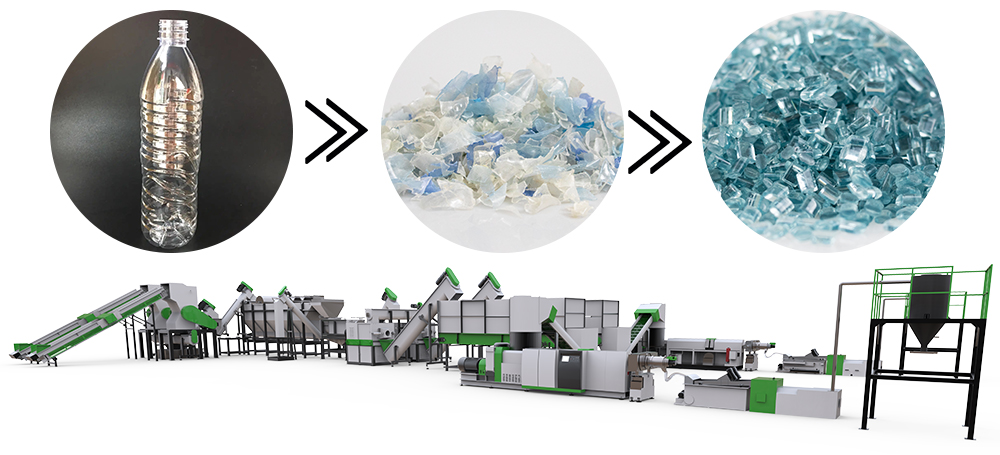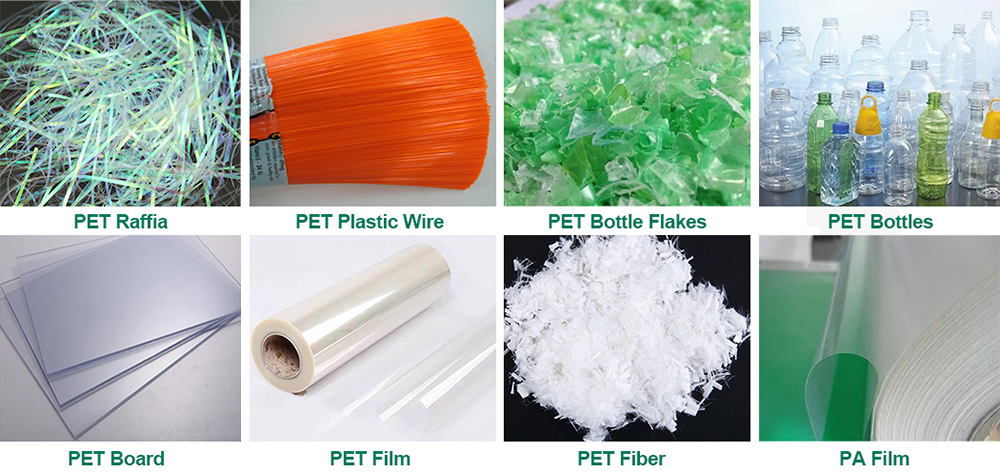Article paragraph
Ⅰ Characteristics of PET plastic bottles
Ⅱ PET plastic bottle recycling method
Ⅲ The use of PET plastic bottles after recycling
PET plastic bottle characteristics
Polyethylene terephthalate is the most important variety of thermoplastic polyester, English name Polythylene terephthalate referred to as PET or PETP (hereinafter referred to as PET), commonly known as polyester resin. It is a polycondensate of terephthalic acid and ethylene glycol, and together with PBT, it is collectively referred to as thermoplastic polyester, or saturated polyester. PET is a milky white or light yellow highly crystalline polymer with a smooth and shiny surface.
It has good creep resistance, fatigue resistance, friction resistance and dimensional stability, low wear and high hardness, and has the greatest toughness among thermoplastics; good electrical insulation performance, little effect of temperature, but poor corona resistance. Non-toxic, weather resistant, good chemical stability, low water absorption, weak acid and organic solvent resistance
Pet plastic bottles are the most widely used beverage packaging. In addition to the daily packaging of carbonated beverages, fruit juices, tea beverages, etc., they are also widely used in many fields such as food, medicine, and chemical industry. PET plastic has a wide range of applications in the packaging field, whether it is packaging film, roll material, or beer bottles, PET plastic is used. But when these materials are discarded, there is the question of what to do with them. The recycling of PET plastic bottles can not only solve environmental protection problems, but also can be used as a new raw material resource to alleviate the contradiction of the global shortage of PET raw materials.
PET plastic bottle recycling method
1. Physical recycling method 1 - shredding waste PET plastic bottles into pieces
The physical recycling method of PETt plastic bottles is relatively simple, mainly drying and granulating the cleaned and discarded pet plastic bottles. Cut waste PET plastic bottles into pieces, separate HDPE, aluminum, paper and adhesive from PET, and then wash, dry and pelletize the PET fragments.
2. Physical recovery method 2 - first separation and then processing
First, the impurities such as caps, caps and labels that are not PET on the discarded PET plastic bottles are separated by mechanical methods, and then washed and dried, usually using a centrifugal dehydrator to reduce the moisture content of the fragments to 2%. Dry in a tubular dryer to reduce the moisture content to 0.5% and granulate.
3. Chemical recycling methods
A method of depolymerizing waste PET plastic bottles under certain reaction conditions to generate useful chemicals, such as the production of low-grade fuel gasoline.
Los usos de los pellets de PET después del reciclaje físico o químico son los siguientes:
1. Para refabricar botellas de plástico PET, los pellets reciclados no se pueden utilizar en contacto directo con los alimentos, pero se pueden utilizar en la capa intermedia de botellas de plástico PET de tres capas y luego convertirse en botellas de bebidas carbonatadas. 2. Hilado para hacer fibras, los materiales PET reciclados se pueden utilizar para hacer fibras, que se pueden utilizar como sacos de dormir, colchones, núcleos de almohadas, fieltros, etc.
3. Material reforzado con fibra de vidrio, el PET reciclado reforzado con fibra de vidrio tiene buena resistencia al calor y resistencia mecánica, y se puede utilizar para hacer piezas de automóvil, como cubiertas de ruedas de automóviles resistentes al calor.
4. Modificación de mezcla, el material PET reciclado se puede mezclar con otros polímeros para producir varios materiales modificados, como la mezcla con PE, se pueden obtener mezclas de PET con un rendimiento de impacto mejorado; si se agrega un poco de polipropileno, la estabilidad dimensional de las mezclas se puede mejorar significativamente. Dado que las polaridades del PE y el PET son bastante diferentes, se requiere un tratamiento de compatibilidad durante la mezcla. Generalmente, la compatibilidad se mejora mediante la modificación del injerto de poliolefina.
5. Las botellas de plástico PET desechadas se procesan y reprocesan. Además de poder fabricar botellas de plástico PET, también se pueden utilizar para hacer sacos de dormir, núcleos de almohadas, cubiertas de ruedas de automóviles, etc. El consumo global de botellas de plástico PET es muy alto. Las botellas de plástico PET se pueden reprocesar y convertir los desechos en tesoros, lo que no solo resuelve el problema de la escasez de materias primas de PET, sino que también reduce la contaminación ambiental y el desperdicio de recursos, lo que es de gran beneficio para el desarrollo sostenible. Su tecnología de reciclaje tiene perspectivas muy amplias.
¿Cuáles son los métodos de reciclaje y usos de las botellas de plástico PET después del reciclaje?
2021/03/03